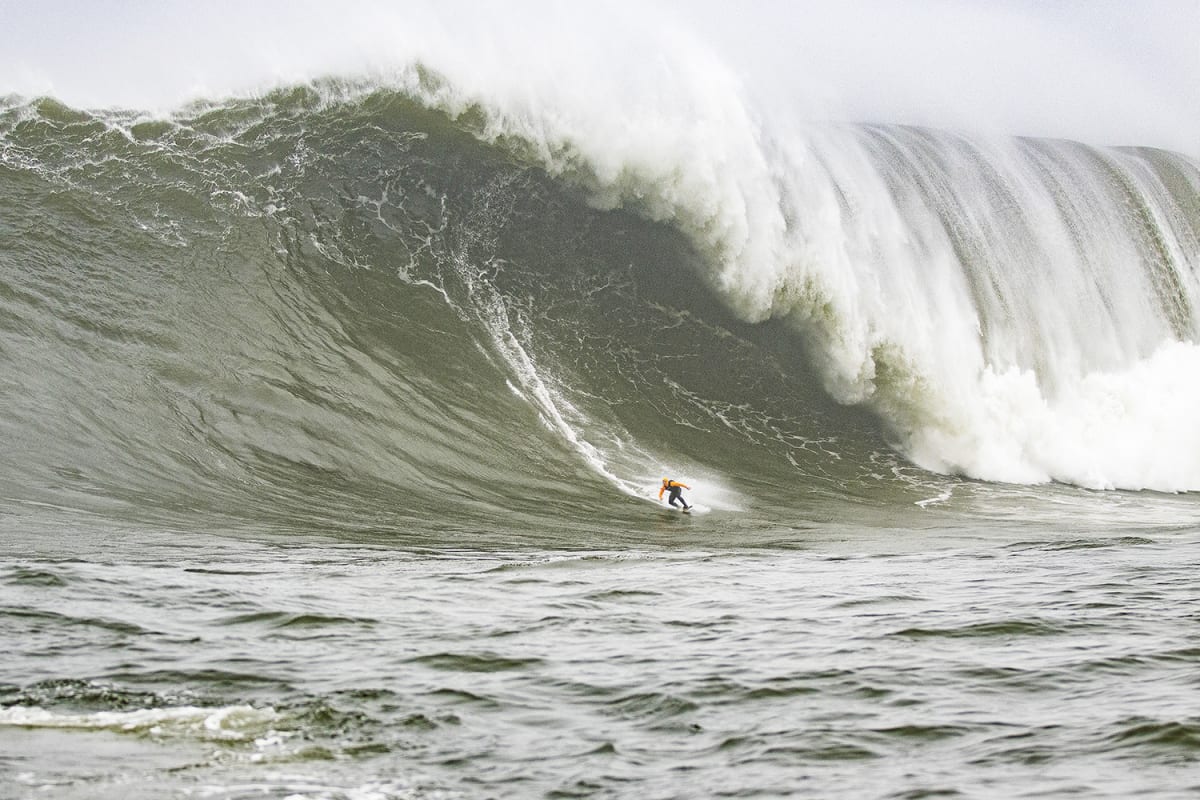 Making or ordering a board is hard because there are so many options, one of the first things that goes into creating a surfboard is the construction. When building a Rusty Surf Board a decision must be made; will your board be PU, Epoly, or EPS? We know what that means but do you? Don’t worry, we are about to break it down for you.
Making or ordering a board is hard because there are so many options, one of the first things that goes into creating a surfboard is the construction. When building a Rusty Surf Board a decision must be made; will your board be PU, Epoly, or EPS? We know what that means but do you? Don’t worry, we are about to break it down for you.
Quick Breakdown
- PU is a Polyurethane blank (PU) glassed with Polyester resin (PE)
- Epoly is a PU blank glassed with Epoxy
- EPS is an Expanded Poly Styrene blank with Epoxy resin

PU/PE
Polyurethane
PU is a closed cell foam and is made by pouring the chemicals into a blank mold and expanding until it fills the entire mold. PU foam is water resistant and absorbs water slowly. The water breaks into the foam, cell by cell. PU comes in many densities. Pro surfers tend to use the lightest density, about 12% to 14% lighter than stock foam. Heavier foam is also available at densities anywhere from 10%, to 200% heavier for tow-in boards.
PU can be glassed with either Polyester resin (PE) or Epoxy (Epoly). EPS can only be glassed with Epoxy. The chemicals involved in making PU are more toxic than other types of foam. PU is actually slightly more expensive than EPS but the PE resin is cheaper than Epoxy. If you are going to get a board made out of PU, consider glassing it with Epoxy resin (Epoly). It costs a little bit more but is much stronger.
- Affordable: PU blanks are the most affordable blanks available. So if you're looking for the most affordable yet quality solution, PU is the way to go.
- Reliable: There's a reason PU blanks have been around for over half a century. They're reliable and used by many of the world's best surfers.
- Easy to Repair: Another great feature of PU blanks is that they're easy to repair. If you get a ding the foam dries relatively fast and fixing the ding should not take too long.
WHY PU/POLYESTER?
PU is a foam technology that is well proven and tested over decades. It has a price point that is affordable, it's easy to use, easy to fix and is the fastest technology to make (build). PU is versatile and can be glassed with either Polyester resin or Epoxy. If you are going to get a board made out of PU, consider glassing it with Epoxy resin. It costs a little bit more but is much stronger.

EPoly
Epoxy + Polyurethane
"It's What You Can't See That Matters"
With EPoly, it's what you can't see that matters. EPoly construction is a traditionalPU polyurethane blank glassed with Epoxy. With all the emphasis on “new technologies” in regards to surfboard cores, glassing techniques, carbon, etc., that is going on in the marketplace today we offer a simple glassing technology that provides surfers with a better product that performs at a higher level and extends the life of the surfboard for a minimal additional cost.
- Lighter, Whiter, Brighter: EPoly boards can be up to 10% lighter than the traditional PE construction depending on the size and volume of the board. EPoly boards are livelier and maintain their flex patterns much longer than PE, this is because polyester resin will get harder and brittle with age while Epoxy has an elasticity property to it.
- Stronger: EPoly boards are stronger than PE and don’t ding or dent as easily as PE, hence they are much more durable. Epoxy has better bonding properties that add to the strength and extended flexing characteristics of the board.
- Sustainable: There is a “green” component to the epoxy resin. From a consumer’s perspective EPoly will last much longer which not only extends the life of the board but gives it better resale value should they choose to sell it.
WHY EPOLY?
Epoxy resin on a polyurethane blank results in a board that is whiter, brighter and doesn’t yellow to the extent of a traditional PE board. Also, Epoxy is known for its higher bonding capabilities overall. An epoxy’s relative strength can hold up to 2,000 lbs. per square inch, while a polyester resin can hold less than 500 lbs. per square inch. We’ve been building Epoly boards for years and with more and more positive feedback we feel it’s the optimum direction for resilient yet affordable surfboard construction.

EPS
Expanded Poly Styrene
EPS
EPS = Expanded Poly Styrene. EPS is a different type of foam. EPS used to be hotwired out of a big block of foam. It is made out of small hard beads that expand under heat and pressure. Most of the earlier foams were lightly fused. In more recent times, molds are made, much the same way they are for PU foam. There is higher end EPS available that has much tighter fusion as a result of the molds being much smaller than the big blocks and is blown under much higher pressures. If you get a ding, you should probably catch a couple more waves and call it a day, and come in. It soaks water much more rapidly than PU foam.
EPS has to be glassed with Epoxy resin. PU foam can be glassed with either PE or Epoxy but Polyester will melt the EPS. Epoxy resin is far superior in strength to polyester. It used to have a bad rap because it would yellow quickly. Not the foam…the Epoxy. Since Clark Foam closed in December 2005, Epoxies have been developed specifically for the surf industry and are now whiter, stronger, and easier to use than ever. The Epoxy resin costs a bit more than Polyester but the EPS is slightly less expensive. The labor is more since it takes longer to set off. The finished product costs roughly $60 to $90 more than a PU depending on the size of the board.
- Lighter: EPS runs approximately 7% to 10% lighter than traditional Polyurethane foam. Yes, there are different densities in both foams but on average I usually make an EPS board with 5% to 10% less volume, or the customer can simply enjoy the extra paddle power. Yes, the EPS cores can be, and usually are glassed slightly heavier but the end product still comes out lighter. I am a big fan of EPS. All sizes of boards. The bigger the board, the percentage doesn’t change, but the weight savings increases.
- Livelier: The ride is different. Because there is a greater part of the weight in the shell of the board, energy gets transmitted differently. Most surfers that have ridden EPS say they are livelier. That becomes problematic in bumpier, bigger surf. Lively becomes “twitchy”. However, that can be overcome by glassing the board heavier, or in the case of really big boards there is 3lb foam available. Most surfboard EPS is 2lb or even lighter. Most of my big wave riders actually prefer EPS.
- Stronger: Epoxy resin is, according to many articles on the subject, up to four times stronger than polyester resin. Might be a bit of a stretch, nonetheless it is noticeably stronger. Has better flex characteristics. Maintains the flex much longer.
Why EPS?
EPS is lighter, livelier and stronger than a PU/PE board. Epoxy is the future. I believe, sometime in the not-too-distant future, more and more board builders will use Epoxy resin. And, at some point in time, that’s going to be the only resin we use.





